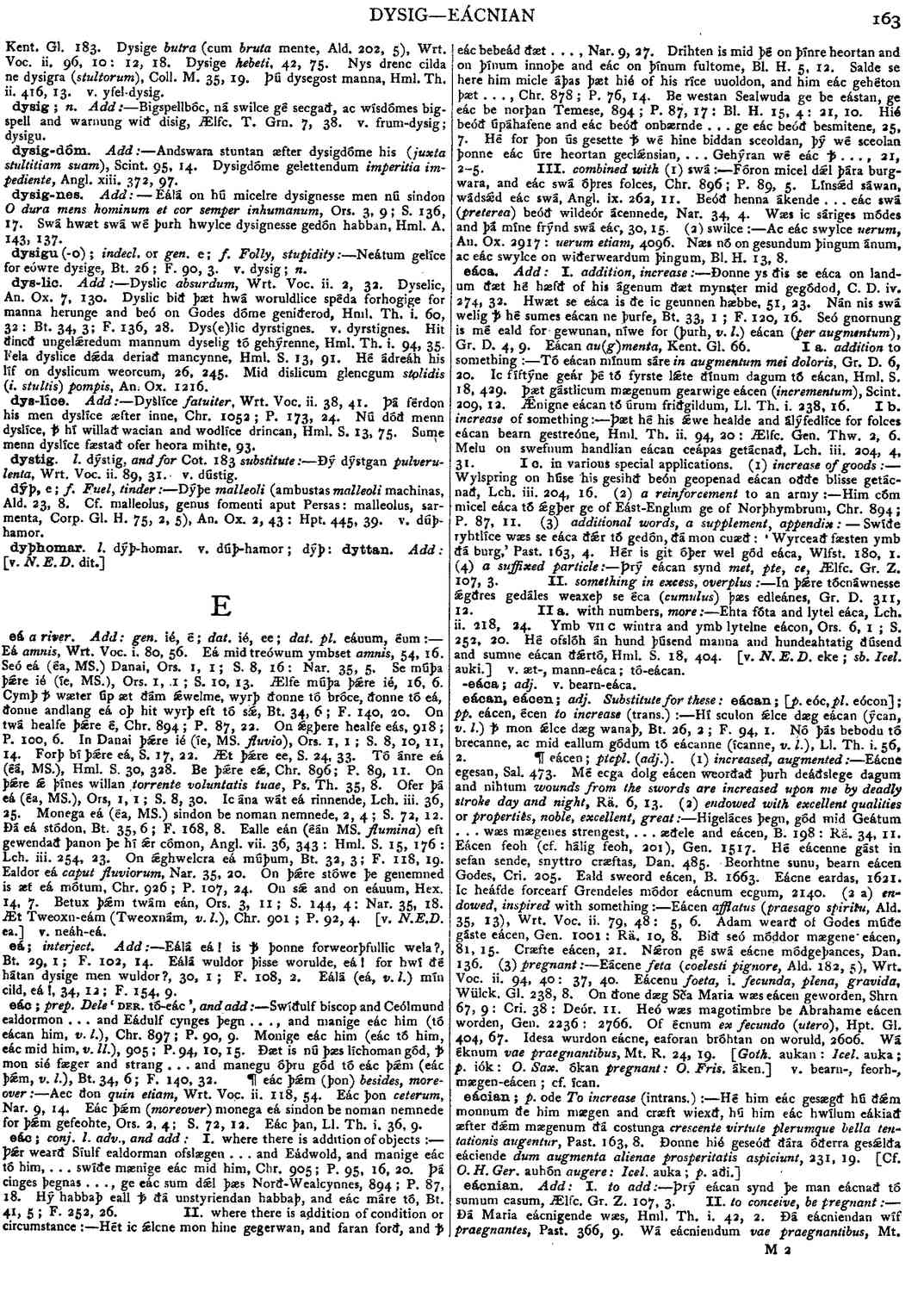eá
- noun [ masculinefeminine ]
-
Eá
amnis,
- Wrt. Voc. i. 80, 56.
-
Eá mid treówum ymbset
amnis,
- 54, 16.
-
Seó eá (éa,
- MS.) Danai, Ors. 1, 1; S. 8, 16: Nar. 35, 5.
-
Se múþa þǽre ié (íe,
- MS.), Ors. 1, 1; S. 10, 13.
-
Ælfe múþa þǽre ié,
- 16, 6.
-
Cymþ ꝥ wæter úp æt ðám ǽwelme, wyrþ ðonne tó bróce, ðonne tó eá, ðonne andlang eá oþ hit wyrþ eft tó sǽ,
- Bt. 34, 6; F. 140, 20.
-
On twá healfe þǽre é,
- Chr. 894; P. 87, 22.
-
On ǽgþere healfe eás,
- 918; P. 100, 6.
-
In Danai þǽre ié (íe, MS.
fluvio
),- Ors. 1, 1; S. 8, 10, 11, 14.
-
Forþ bí þǽre eá,
- S. 17, 22.
-
Æt þǽre ee,
- S. 24, 33.
-
Tó ánre eá (éá,
- MS.), Hml. S. 30, 328.
-
Be þǽre eǽ,
- Chr. 896; P. 89, 11.
-
On þǽre ǽ þínes willan
torrente voluntatis tuae,
- Ps. Th. 35, 8.
-
Ofer þá eá (éa,
- MS.), Ors. 1, l; S. 8, 30.
-
Ic ána wát eá rinnende,
- Lch. iii. 36, 25.
-
Monega eá (éa,
- MS.) sindon be noman nemnede, 2, 4; S. 72, 12.
-
Ðá eá stódon,
- Bt. 35, 6; F. 168, 8.
-
Ealle eán (éán MS.
flumina
) eft gewendað þanon þe hí ǽr cómon,- Angl. vii. 36, 343: Hml. S. 15, 176: Lch. iii. 254, 23.
-
On ǽghwelcra eá múþum,
- Bt. 32, 3; F. 118, 19.
-
Ealdor eá
caput fluviorum,
- Nar. 35, 20.
-
On þǽre stówe þe genemned is æt eá mótum,
- Chr. 926; P. 107, 24.
-
On sǽ and on eáuum,
- Hex. 14, 7.
-
Betux þǽm twám eán,
- Ors. 3, ll; S. 144, 4: Nar. 35, 18.
-
Æt Tweoxn-eám (Tweoxnám,
v. l.
),- Chr. 901; P. 92, 4.
Bosworth, Joseph. “eá.” In An Anglo-Saxon Dictionary Online, edited by Thomas Northcote Toller, Christ Sean, and Ondřej Tichy. Prague: Faculty of Arts, Charles University, 2014. https://bosworthtoller.com/43189.
Checked: 0